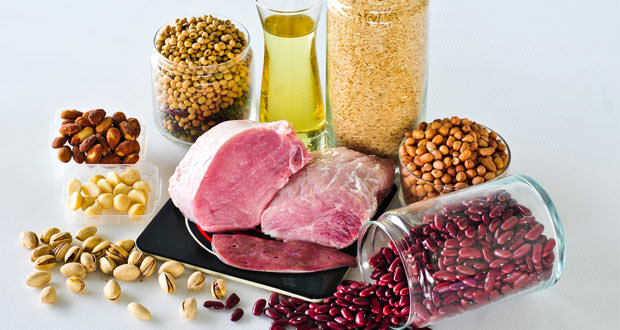
We are hardly brought to think about what we eat in terms of chemical elements and metabolic, thinking instead aspect prevailing taste.
Our body is a kind of workshop that acquires from food items, broken down by enzymes, in order to restore vigor and well-being. In this process includes the Vitamin B1, technically called thiamine, which acts as a coenzyme participating in the elaborate process of transformation of glucose into energy; fundamental developments in some metabolic.
In particular, in the sport with high-energy consumption therefore, vitamin B1 is much needed, but among its functions remember that protects the heart and nervous system and participates in the formation of red blood cells. It is important then to wonder if taken in sufficient quantities from food. Let’s see what are the functions and dietary sources of thiamine.
1.) Given that acts in the nervous system and influences the mood of the person, vitamin B1 has functions involved in the production of energy from glucose molecules present in carbohydrates. The body does not deliver thiamine storing it for later use. It is expelled if not used. So you must take it every day to ensure a healthy body; Vitamin B1 deficiency in body tissues accelerate their deterioration. There are also substances and habit’s enemy of the absorption of this vitamin such as alcohol, large amounts of sugar in our diet and smoking, as well as the coffee. The attention should also be paid to system cooking of food, as a general rule, we can say that the temperature destroys partly integrins enzyme.
2.) A modest amount of thiamine is present in almost all foods, but there are certain foods that contain a higher concentration such as pork ham, in particular, and the entrails, including the liver, but also milk and shellfish. The molecule of plant origin is contained instead in mushrooms, whole grains, wheat germ, molasses and bran, legumes and yeast. It is a good idea also the consumption of bread and whole grains or added vitamins, because in the bran of the wheat is thiamine, as well as in rice hulls; wealth that otherwise would be lost during grinding. A diet containing these foods will ensure the body a quantity of thiamine sufficient to prevent accumulation of fats in the arterial walls.
3.) Lack of vitamin B1 leads to symptoms recognized as cases of ” confusion “, poor concentration in the study or work, difficulty of coordination, weakness, muscle power, muscle cramps, heart problems and significant reduction of appetite. The excesses instead generate insomnia and can cause headaches and irritability. A healthy lifestyle includes, in addition to physical activity and to healthy exercise, a balanced intake of foods containing vitamin B1 or prediction of intake with food supplements.